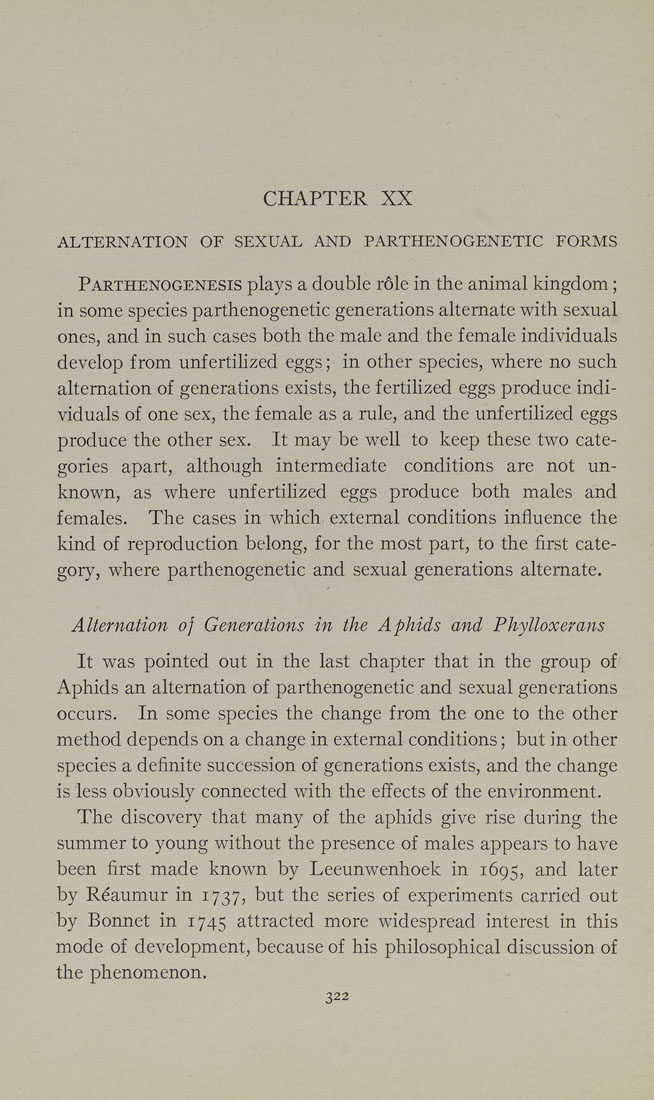CHAPTER XX
ALTERNATION OF SEXUAL AND PARTHENOGENETIC FORMS
Parthenogenesis plays a double role in the animal kingdom;
in some species parthenogenetic generations alternate with sexual
ones, and in such cases both the male and the female individuals
develop from unfertilized eggs; in other species, where no such
alternation of generations exists, the fertilized eggs produce indi¬
viduals of one sex, the female as a rule, and the unfertilized eggs
produce the other sex. It may be well to keep these two cate¬
gories apart, although intermediate conditions are not un¬
known, as where unfertilized eggs produce both males and
females. The cases in which external conditions influence the
kind of reproduction belong, for the most part, to the first cate¬
gory, where parthenogenetic and sexual generations alternate.
Alternation of Generations in the Aphids and Phylloxerans
It was pointed out in the last chapter that in the group of
Aphids an alternation of parthenogenetic and sexual generations
occurs. In some species the change from the one to the other
method depends on a change in external conditions; but in other
species a definite succession of generations exists, and the change
is less obviously connected with the effects of the environment.
The discovery that many of the aphids give rise during the
summer to young without the presence of males appears to have
been first made known by Leeunwenhoek in 1695, and later
by Reaumur in 1737, but the series of experiments carried out
by Bonnet in 1745 attracted more widespread interest in this
mode of development, because of his philosophical discussion of
the phenomenon.
322
|








